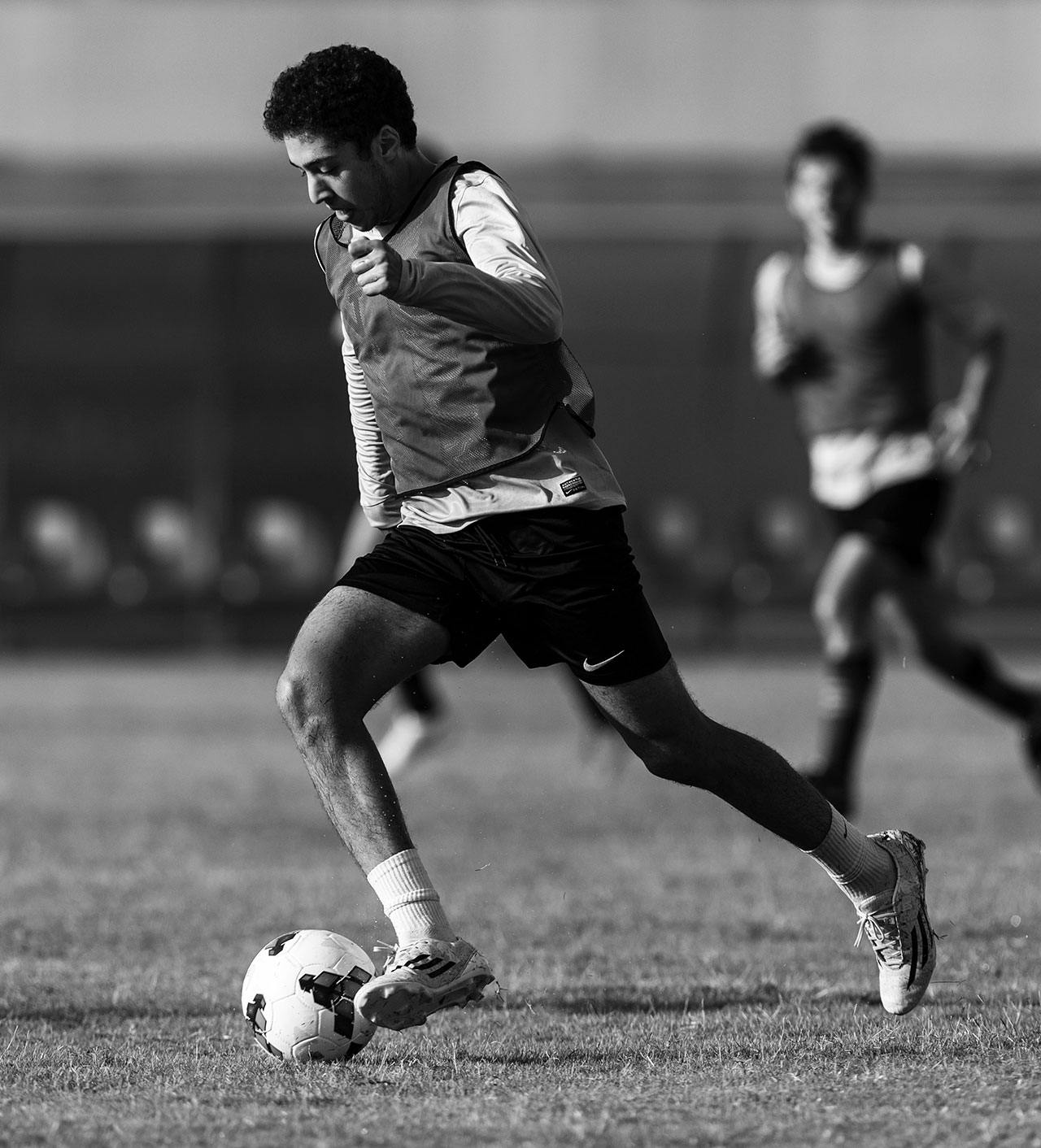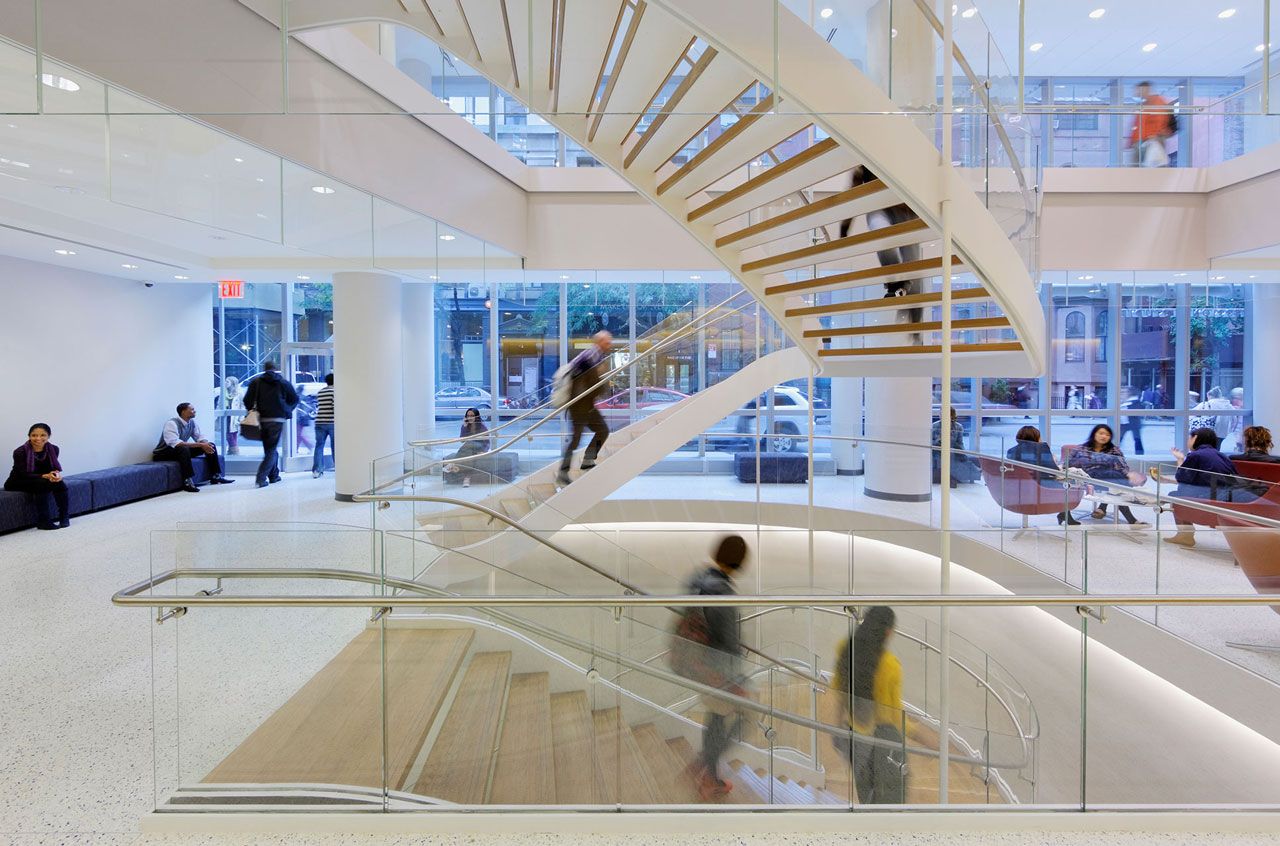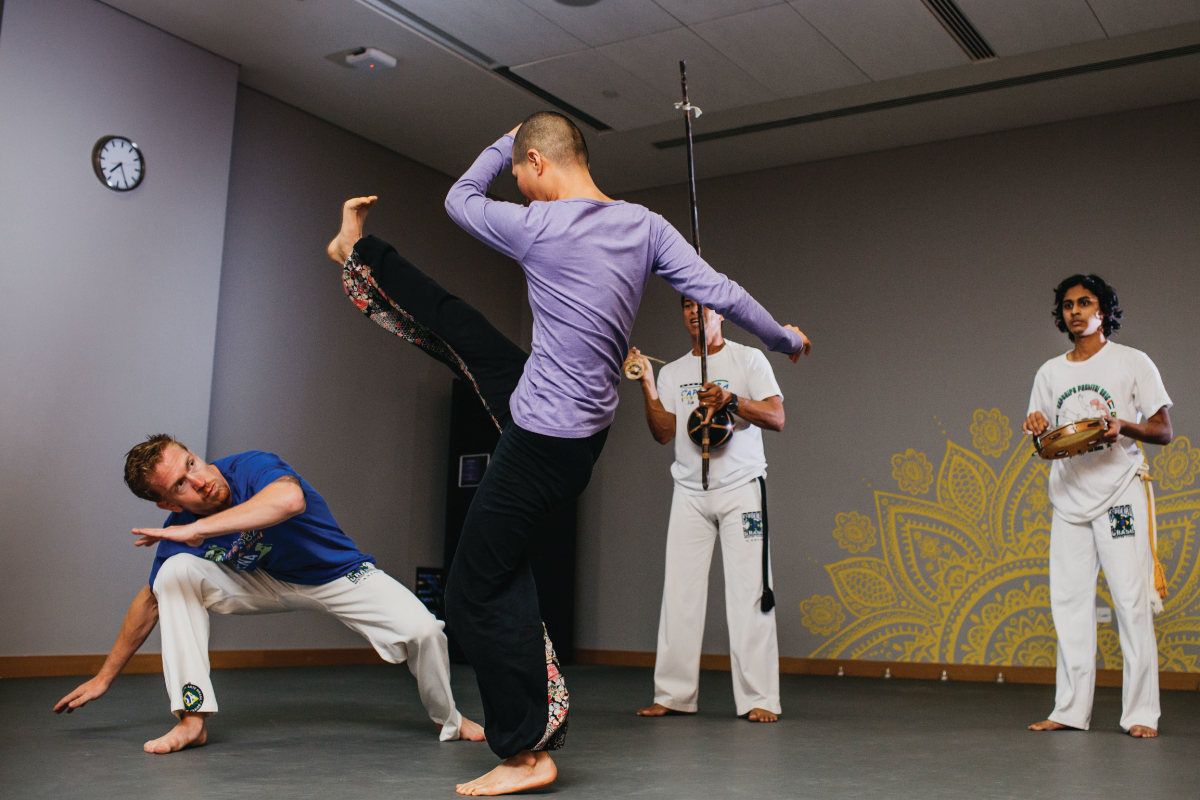Published August 22, 2022
Sport Broadcasting at NYU: Get the Play-by-Play
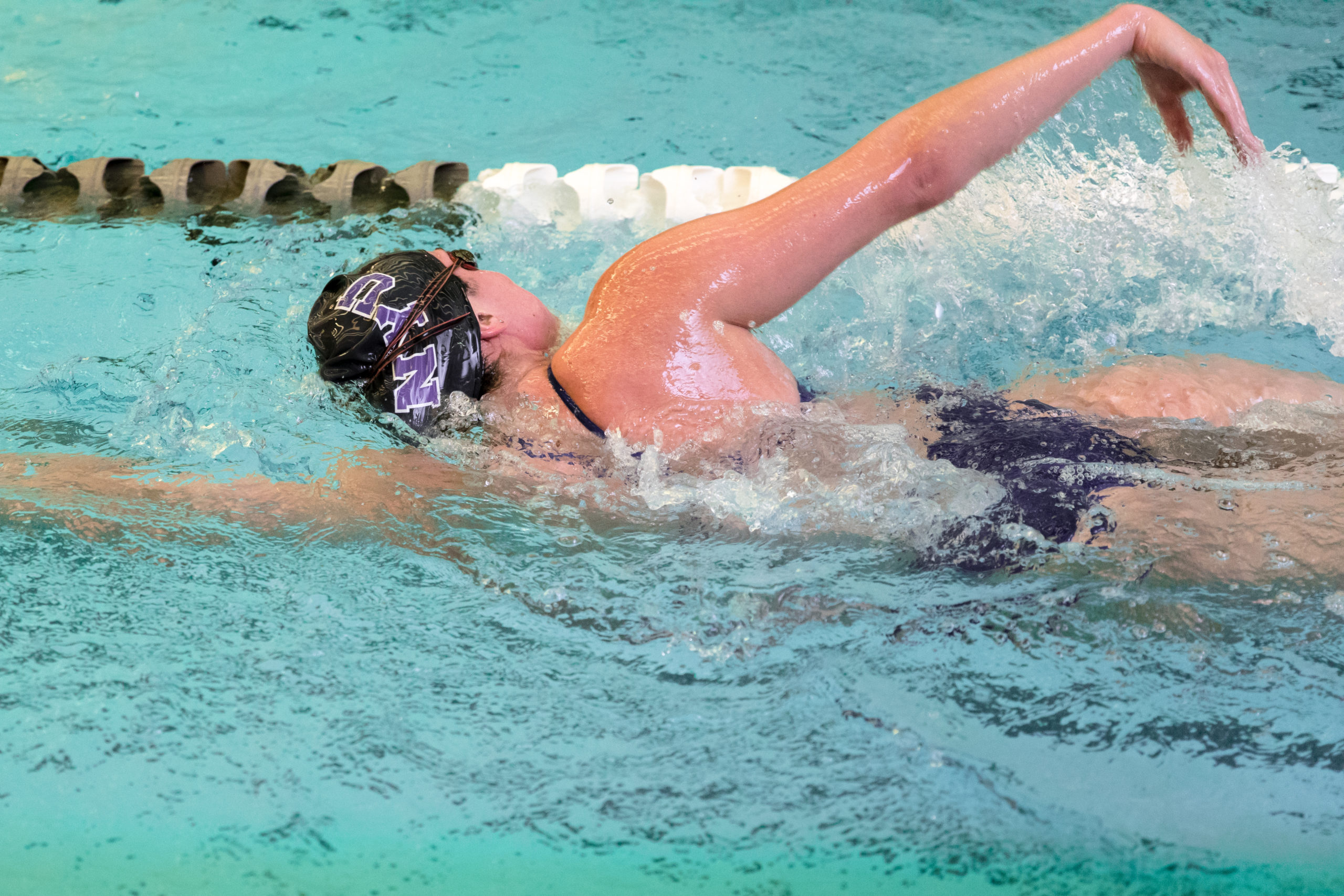
Hometown heroes and villains, underdogs and upsets, sweat and tears. Epic stories play out under the glare of stadium lights, and sports broadcasters bring them to life. In NYU’s Sport Broadcasting course, an elective that’s part of the Sport Management major at the School of Professional Studies, students get the chance to create and produce original sports content.
A Seasoned Sports Scholar
David Cooper, the course’s professor, teaches from a deep well of personal and professional experience. He’s worked for teams, leagues, brands, network partners, and broadcast streaming companies for about 25 years. For example, as a network liaison for the NBA, he helped communicate the launch of NBA TV. Then, he worked in public relations before starting his own company promoting sports content for companies like Amazon and ESPN. Today, he brings his unique background in television, broadcast, storytelling, and production to the course.

Coursework That Competes
Sport Broadcasting coursework is grounded in the art of storytelling. As a result, the class focuses on story flow and how to keep the attention of the all-powerful consumer. Therefore, students learn to write game and feature stories and develop writing strategies for broadcast, focusing on the active voice. “It was a great class for me to develop my storytelling skills,” confirms Bruno Littério, Class of 2023.
Beyond storytelling, students learn what Professor Cooper calls “thinking like a producer.” In other words, they learn how to identify the various elements to incorporate into each story and pick the best platform. Additionally, students dive into the production side of broadcast media with a focus on internet streaming, shooting on location, anchoring, and game coverage. All these different facets have to come together to bring a broadcast to life. What’s more, guest lecturers, who have included ESPN executive producers and an Oscar-winning documentarian, visit the class to share additional insights into their fields.
Next, students have a chance to put these elements into practice. In the most recent semester, they teamed up, interviewed one another, and then told each other’s sports stories through four-minute features. “When working on our projects, Professor Cooper gave us total creative freedom. That was my favorite aspect of the class,” shares Bruno. “The variety of content the class presented reflected our ability to express ourselves through our work in different ways.”
After putting everything together for themselves, the class holds a screening of the fascinating stories they’ve uncovered. “This semester some were really funny, and some were really dramatic. Everything came together at the fundamental level. It showed how to actually imagine, research, write, edit, and produce a piece of broadcast content,” Professor Cooper says.
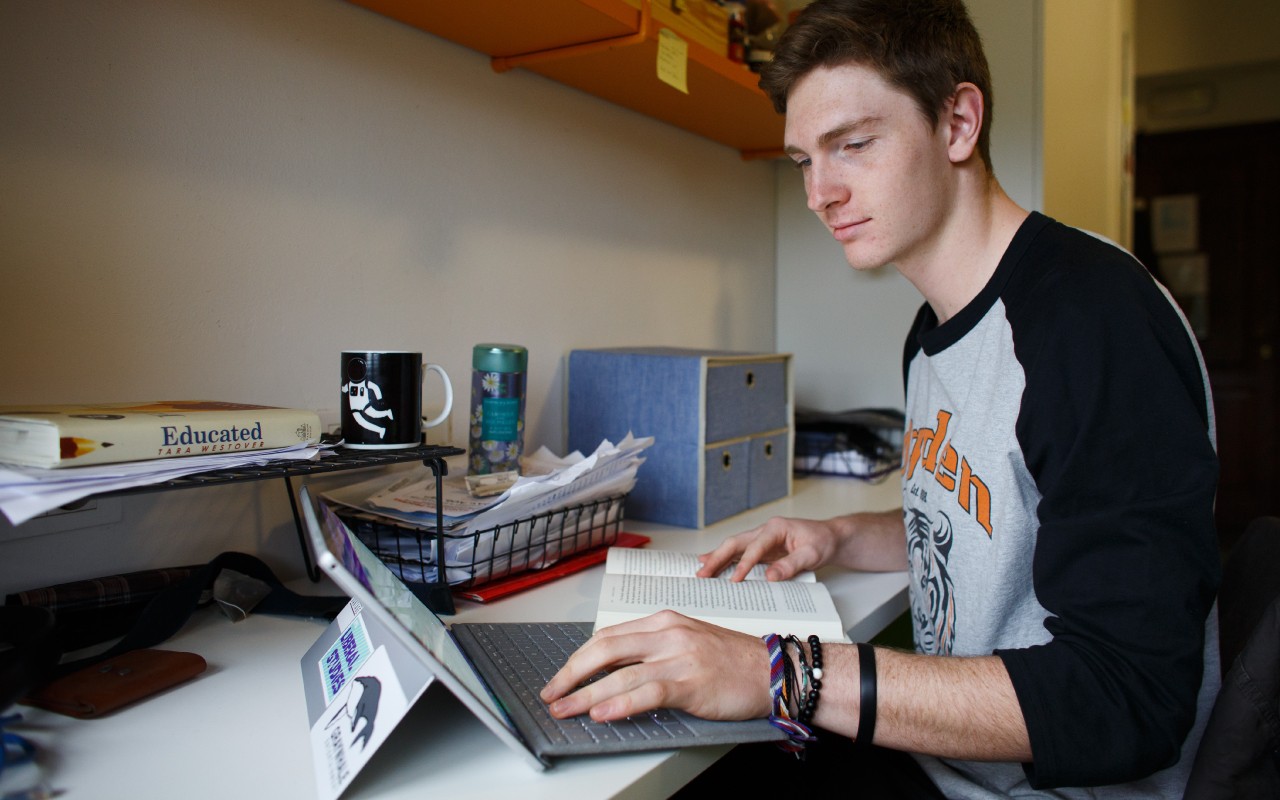
The Evolving Sports Industry
The COVID-19 pandemic changed the way sports are broadcast. While networks traditionally broadcast directly from events, commentators began broadcasting from their basements and living rooms. Some even shot from their cell phones. “That showed people could be nimble, and they could be flexible,” Professor Cooper explains. “It really fueled innovation because we had to figure out new ways to broadcast. I think that created a lot of interesting ways to communicate.”
Now that things are opening back up, Professor Cooper hopes to send students out into the field to cover live sports events. He’s eager for students to shadow some of New York City’s broadcast talent so they can get a sense of what it’s like on the ground, whether they’re pulling cables or helping manage breaking news.

New York City’s Competitive Advantage
NYU’s location in the epicenter of sports media means the opportunities here are endless. “Being in the number one media market is an advantage for all of our students,” says Professor Cooper. “The access to the various media companies and broadcast talent is unmatched.” For example, he recalls a student who went to the studios at ABC and broadcast his class feature from the desk of LIVE with Kelly and Ryan. “If students want to go into this field, this really is the ultimate opportunity—to be in New York City and to be at NYU, where we have such a legacy of people who’ve come through our doors in that world.”

